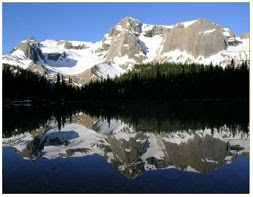 |
| STEFANO AGNOLETTO |
A lecturer from Milan has written a
book about the Italian immigrants who built Toronto’s homes and in the process
changed society.
Stefano Agnoletto lives in Milan, but
he was in Toronto recently for the launch of his new book, The Italians Who
Built Toronto — Italian Workers and Contractors in the City’s Housebuilding
Industry, 1950-1980.
Stefano is a lecturer, a teacher with
doctorates in history and economics. OK, so how did a guy from northern Italy,
with no calluses on his hands, come to write about the men who dug basements
and poured concrete in Toronto all those years ago?
We were sitting on the porch of the
house where he was staying in the Annex on one of the last of the warm fall
days. I was curious because it isn’t often that we have a chance to let others
teach us about ourselves.
The story of the book is a roundabout
affair. Stefano said “Italy has become a country of destination for people, so
it’s important for us to remember our own migration.”
When his wife won a postdoctorate
fellowship at the University of Toronto, he came with her and he spent a year
and a half gathering research about those who had left Italy for Toronto.
I remind you that the history of the
Italians in Toronto, especially in those old days, is fraught with labour
strife, racism, discrimination, exploitation and intra-Italian rivalry; the
subject matter is deeply sensitive. But Stefano had an advantage:
“I was an outsider, I could speak to
everyone; it was incredible, how the people were open to me — construction
workers, union leaders, academics. Also, as an outsider, I have an open mind. I
was able to speak to people who might not want to sit in the same room
together.”
Why might people not want to sit in the
same room? There are hard memories, both social and political. Some Italians
were established well enough to sponsor others, house them in their basements
and profit from the rent; if they were contractors, they might provide the
newcomers with hard, dangerous non-union jobs for lousy wages.
More broadly, there are also sharp
cultural differences among the Italians who came to Toronto, including dialect.
He said, “I interviewed one grandmother
and her grandson. I spoke in Italian, she spoke in Calabrese to him, and he
spoke in English to me; and when they spoke Calabrese to each other, I didn’t
understand.”
And then Stefano said something I hadn’t
quite realized: “In the construction industry, workers who spoke dialect
learned to speak Italian in order to speak to each other — so, at work, they
became Italian. And then they became Canadian.”
A double, even a triple belonging.
Why did he focus on the construction
industry? “The Italians arrived at the right moment. Toronto was exploding. The
only work available was construction which, as a result, became an Italian
industry.”
If the job site was complicated, there
were also problems in the wider, dare I say WASP, community: Italians were
dangerous, they use knives, they were swarthy and not like “us”; as a result
they were not welcome in society.
And so they gathered by themselves at
Brandon Hall, the social club which lent its name to the union group formed to
protect workers after the Hogg’s
Hollow disaster.
Hogg’s Hollow?
You could look it up.
Stefano said, “The building boom gave
people the resources to build unions, to be employers, and to be a labour force
in the community.”
The result? Jobs mean money, and money
means social mobility and respectability; in the short space of 50 or 60 years,
all we want now are Italian shoes, suits, cars and bowls of pasta; and, if you
look around, we also welcome Italian philanthropy.
Other ethnic groups are following an
Italian trajectory; if you don’t think this is so, look at the Vietnamese or
the Tamils.
According to Stefano, Italy has more or
less forgotten those who left so long ago; the story of the massive
out-migration is not taught to Italian schoolchildren.
Italy, which is receiving waves
of immigrants from many other countries, not always easily or happily,
should pay attention to what happened here. Why?
“We have to remember how things were,
so when we look at the new arrivals we can understand their problems.” That
lesson is as important in the
old country as it is in Toronto today.
The book is available through Peter
Lang Publishing.
This article was suggested by Manuela Cerruti, Honorary Canadian Consulate in Milan.
Remark : On March 17, 1960, the incident popularly known as the "Hoggs Hollow Disaster" occurred. Five young Italian immigrant workers were killed while constructing a tunnel for a water main at Hoggs Hollow. The details of the accident, where they were trapped 35 feet underground in a cramped, dimly lit tunnel, sparked a public outcry over the lack of safety standards in construction. Ultimately it led to an improvement in working conditions




























